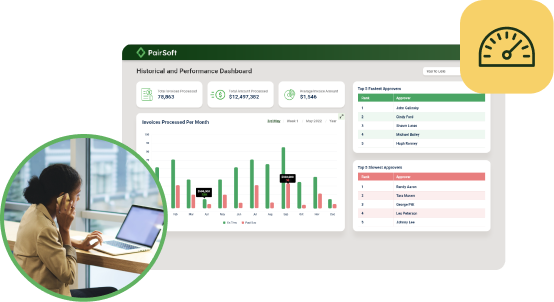
Wadih Pazos
Wadih founded both PairSoft and PaperSave. He is an avid technologist who specializes in streamlining operations and maximizing productivity.
View all posts by Wadih PazosWadih Pazos • October 1, 2021

Document imaging has the potential to cut down the waste in large sectors that service many people, enabling savings to accumulate quickly over time. There are a number of reasons why colleges should move away from paper making things easier not just for administrative workers at schools, but for students as well.
While not ever single document can always be kept in digital format, there are many procedures eliminating physical materials can positively impact, expediting lengthy processes and embracing more direct methods of communication.
While many universities are interested in going green to help their public perceptions and reduce the sizeable amounts of paper that move through campuses, most college officials are more interested in the savings their institutions will receive by sliding away from paper and the amount of time freed up by electronic workflow, according to GreenBiz.
The University of Oregon was able to save approximately $200,000 by converting from paper reviews of classes and faculty into scanned copies. In addition, the University of Washington’s digital admissions process prevent 30,000 pieces of mail being sent, added the source.
As technology with similar eco-friendly purposes is also developed, college campuses and businesses alike can better position themselves for the digital age. Even the thick text books students were once forced to carry around are being cut out of the traditional scene. Scanning hardware allows attendees to use digital copies of learning materials to save all the paper that normally goes into printing textbooks.
The popularity of e-readers makes it easier than ever for students and employees to carry around and store all of their materials in a small devices. As paperless solutions become more widespread, the number of gadgets and systems designed to help complement the transitions are only going to increase as well.
This can help organizations adopt their paperless alternatives much more quickly and assist employees in accessing all the files they need wherever they are for improved convenience as well as cost reductions.
Administrative offices are busy places at most universities. Both undergraduates and graduates visit to hand in various forms, collect reimbursement checks and much more, which all involve paper in some way or another. These locations are often filled with sensitive data about all the students enrolled at the college, making school officials develop some kind of way to ensure such information is secure.
The limits of a lock on a filing cabinet only go so far, but paperless solutions have an even deeper level of security. When organizations implement document management software, they can customize the sophistication of security to a much greater depth, stated GISuser. Whether employees add encryption to all the records or simply store all the vital data in another safe location, eliminating paper from this key office on universities can be very advantageous.
The same types of benefits can be applied to any businesses that accept paperless solutions too, particularly in the human resources departments. The number of areas with which paperless solutions can be applied provides large organizations with the means necessary to become more flexible in their industry.
As more pivotal processes move to the digital landscape, businesses will require the tools to help them move all of their paper documents into cyberspace.

